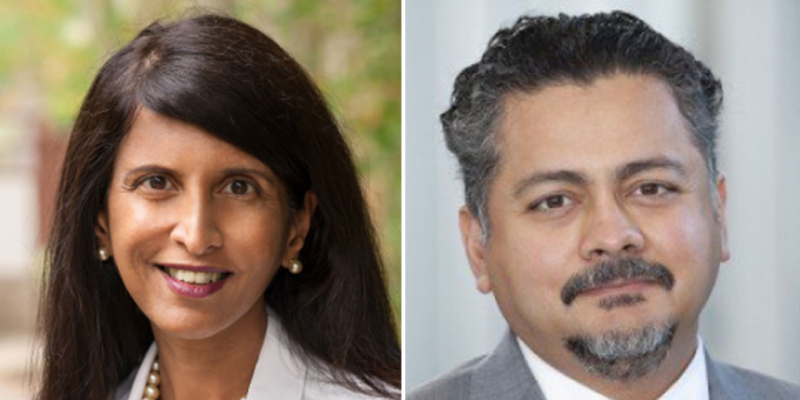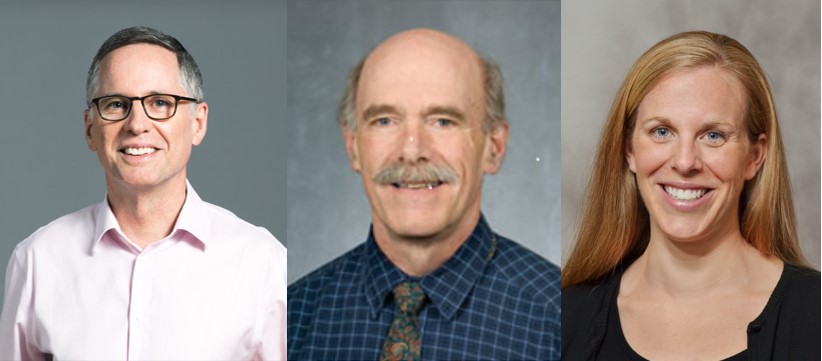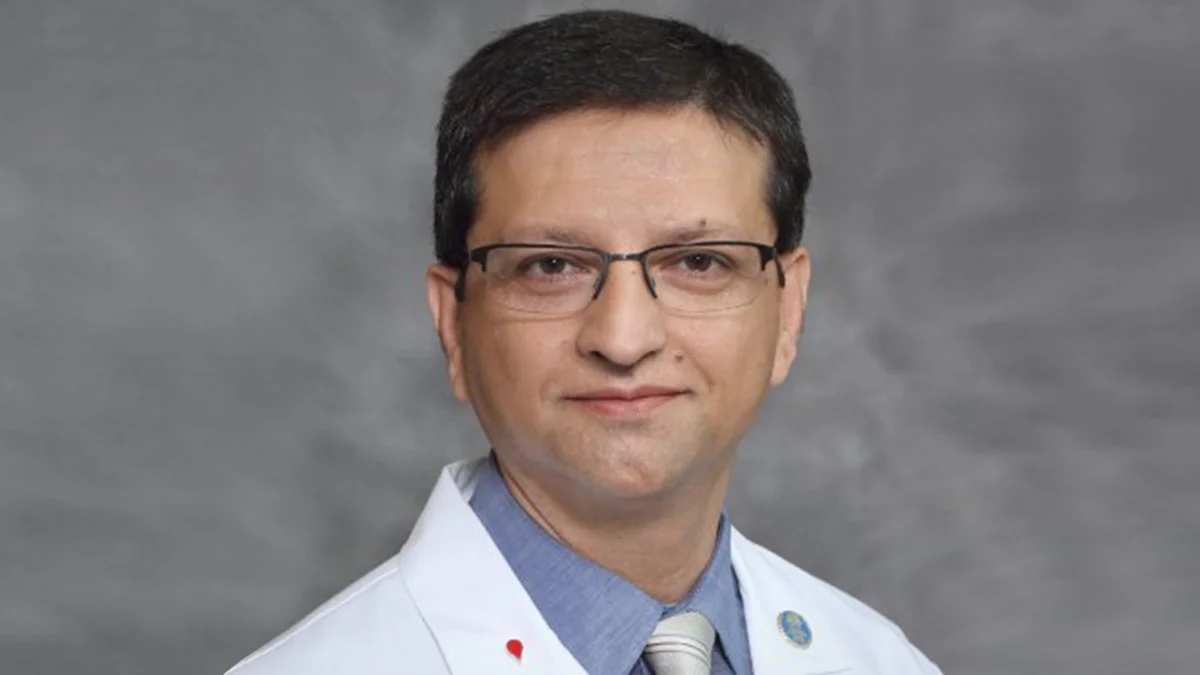
Amrita Krishnan, MD, FACP, Chief of the Division of Multiple Myeloma in the Department of Hematology and Hematopoietic Cell Transplantation at the City of Hope in Duarte, California, and Saad Z. Usmani, MD, MBA, FACP, Chief of Myeloma Service at Memorial Sloan Kettering Cancer Center, debate whether chimeric antigen receptor (CAR) T-cell therapy will replace autologous hematopoietic stem cell transplantation (AHSCT) in multiple myeloma (MM).
CAR T-Cell Therapy Is Not Ready to Replace AHSCT
By Dr. Krishnan
Think about what matters to patients when you think about transplant or no transplant. They want to get a response, they want to get a remission and for the remission to last, and they want to live longer.
Things such as minimal residual disease (MRD), we love that, but I don’t think too many patients show up in your office and say, “Can we talk about my MRD?” They just want something that is going to work and get them in remission for as long as possible.
In the RVD-1000 data, out of 1,000 patients, 751 had lenalidomide, bortezomib, and dexamethasone (RVd) induction, followed by autologous transplant. They had some degree of risk-adapted maintenance. The progression-free survival (PFS) was 65 months, and the standard risk was even better at 72 months. Remember those numbers when you sit in front of your patients and talk to them. I don’t need to just use the RVD-1000 study now that we have a phase III DETERMINATION study where patients received RVd induction followed by either continued RVd for consolidation or AHSCT. The median PFS was 67 months.
So what do patients care about? Survival. Look at that survival almost 80% going out to 84 months. You can argue, “Can we do even better than that? What about the high-risk patients?” Certainly, in RVD-1000, the numbers were lower in that high-risk population, and in DETERMINATION as well, the PFS was lower. We haven’t just stopped there with RVd, we have other induction strategies that could potentially further improve transplant, and the Forte trial is one example of that, using carfilzomib, lenalidomide, and dexamethasone (KRd) induction, followed by transplant, followed by consolidation, and then an intensive maintenance with carfilzomib and lenalidomide. If you look at that, in terms of the initial part, KRd followed by transplant, even high-risk patients certainly seem to be doing quite a bit better, if you look at PFS in that high-risk subgroup.
PFS still remains our gold-standard endpoint when we look at these trials. Those surrogate endpoints, such as MRD, are still debatable in terms of how we use them for clinical decision-making. I would urge you, when you think about what you’re going to offer your patient, to think about transplant. That long follow-up, 67-month PFS, is very hard to beat.
Now the question is, can CAR-T do better? Dr. Usmani is probably going to talk about response rates: 90% to 97% in CARTITUDE. We have some studies looking at transplant versus no transplant. CARTITUDE-2, which includes high-risk disease with planned quadruple induction followed by CAR-T, presented some early results at the 2022 American Society of Clinical Oncology Annual Meeting. The CARTITUDE-2 results that were presented by Jens Hillengass, in terms of the early relapse cohort—one to three prior therapies. There were some impressive response rates, at 95%, but are you really going to make your decisions upfront based on 20 patients? If you look at the Center for International Blood and Marrow Transplant Research data from 2020 in the United States, we did 7,000 autologous transplants for MM. So we are looking at 7,000 versus 20—I think our statisticians would have something to say about that.
The CARTITUTE cohort B data just released ahead of the 2022 American Society of Hematology Annual Meeting are compelling in that for functionally high-risk patients, there is a role for moving CAR-T earlier. While it does not prove CAR-T is superior to HSCT, the fact that most of the patients in this cohort had an early relapse post-HSCT is suggestive that there is a group of patients for which CAR-T is superior to HSCT as initial consolidation. However, identifying this group prospectively remains the challenge.
Let’s look at toxicities regarding CAR-T. You can argue cytokine release syndrome (CRS) doesn’t frighten us anymore. Most patients are going to get CRS, and we can manage that. But what about neurologic toxicity? What’s the percentage of neurologic toxicity with AHSCT? I would say zero, maybe? But with CAR-T we have neurologic toxicity in up to a third of our patients, as well as those late neurologic toxicities that we still remain concerned about and are not as good at predicting.
Here’s the other thing—getting CAR-T for patients is a challenge. We have a waiting list that’s probably about 50 to 75 patients long. Our median time on the wait list is five months for patients. Think about manufacturing time and all the true logistics of CAR-T, and that’s just in the United States. What about the rest of the world? We have very limited access to CAR-T but very broad access to AHSCT. In conclusion, CAR T-cell therapy is not ready to replace AHSCT. Even if it doesn’t sound exciting, transplant remains safe, low-cost, and widely available.
CAR T-Cell Therapy Will Replace Autologous Transplantation in Newly Diagnosed MM
By Dr. Usmani
I’m a big high-dose melphalan fan. I’m a Bart Barlogie disciple. That’s how I was brought up. That’s how I’m trained. We know that high-dose melphalan has served us very well and has served our patients very well. We’ve tried to do several clinical trials over the last 35 to 40 years. Each time, high-dose melphalan continues to give us better depth of response, better PFS, and especially in those early trials, better overall survival benefit.
There is no question in my mind that high-dose melphalan is one of the most effective therapies we have had in MM. Where do we go from here? AHSCT is great, but the field is moving fast. The goal has always been to pick the right strategies to get your patients to the best depth of response during that first year of diagnosis because that’s what gets patients to the best survival outcomes. All of us agree with that. We understand that MM is a heterogeneous disease, and the recipe may be different for different patients. But the way that things are moving, we have so many effective therapies that we can no longer say that high-dose melphalan is our single best agent. In fact, I would like to thank Dr. Krishnan for showing that CAR T-cell therapies are a better single agent than high-dose melphalan—even in relapsed/refractory MM patients.
If you’re seeing that data in relapsed patients, do we really believe that is not going to happen in the frontline setting? I don’t think so. And it’s better tolerated. We can give that therapy to older patients. And second primary malignancies are a real issue. It’s not an epidemic, but it is a real issue. For all of us MM-treating physicians, we have seen our patients die from hematologic malignancies as a consequence of receiving high-dose chemotherapy along with immunomodulatory drugs (IMiDs) as part of maintenance therapy. I do not say CAR-T plus maintenance. I say CAR T-cell therapies will replace AHSCT in newly diagnosed patients.
Overall response rates (ORRs) with CAR-T are superb. Can Dr. Krishnan code a single piece of high-dose melphalan data that give us those kind of ORRs in relapsed patients? No. The best she can give us is 50%. Even data that were published two years ago gave us a response rate of 67% in patients who are a median of seven or eight prior lines of treatment or proteasome inhibitor (PI)/IMiD-refractory or anti-CD38-refractory.
Yes, CRS is a real issue, but it’s transient. Yes, neurotoxicity is a real issue, but it’s low-grade and transient. It’s not a lingering issue, at least with the data that we have at hand. We do have data showing us that there are good constructs out there that give us good depth of response, and the median PFS and overall survival (OS) is still not reached in relapsed/refractory patients.
Is there a reason to believe that, if you have a fifth prior line of treatment getting that kind of response and the PFS and OS are still not reached, we won’t be able to deliver this kind of therapy and expect something different in the frontline setting? I don’t think so. This is exactly what we are seeing in CAR-T as well. These are two very important cohorts. One [cohort] is one to three prior lines of treatment and lenalidomide-refractory patients. The second cohort is even more important. These are patients who are early relapsers. These are patients who are becoming PI/IMiD- and/or anti-CD38-refractory within the first two years of their diagnosis. Look at those response rates and tell me you don’t believe them or that they will not translate into better survival outcomes for our patients.
Why can’t we accept that we have better single agents than high-dose melphalan in the year 2022? I do believe that the CARTITUDE-5 trial, which is in transplant-ineligible or transplant-deferred patients, will likely end up changing the standard of care of MM patients in the future. The second and very important piece of this study design is the fact that we are not going to be giving maintenance treatment for these patients after ciltacabtagene autoleucel, which is a B-cell maturation antigen (BCMA)-directed CAR T-cell therapy. That’s where the field will likely head. We will be defining duration of treatment. Dr. Krishnan is leading a phenomenal clinical trial, SWOG 1803, which will define duration of maintenance with daratumumab and lenalidomide compared with lenalidomide in post-transplant patients. There’s no reason why we cannot learn from that trial and define duration of treatment in other settings, especially this one.
I do think that the BCMA CAR T-cell therapies will likely beat AHSCT as exemplified in this clinical trial design. There are other clinical trials being planned in a similar fashion. We have to wait for OS data in the context of median OS during the time period that patients are being enrolled. When patients progress, we have other therapies we can give to them and that impacts the OS outcome. It was easier for earlier trials to prove the OS difference, and it’s going to be more challenging for us to prove the OS difference across different trials. The point that ORR and PFS are not relevant to this discussion is incorrect. For the interim depth of response, sustained MRD negativity and PFS are going to be our guiding light for frontline treatment clinical trials. OS is going to be too much of an ask.
What will it take to beat AHSCT? Our pharma colleagues have to help us by bringing the cost down for this therapy. We cannot put this burden on health economics globally. They have to bring the cost down and deal with the manufacturing concerns that Dr. Krishnan raised.
We do need long-term safety data. We do need to understand the neurotoxicity with targeting BCMA. The same thing with GPRC5D. If you are able to resolve this issue, then yes, CAR T-cell therapies will win and become the frontline therapy for newly diagnosed MM. It’s not a matter of how but when. It is going to happen.
My takeaways are that CAR T-cell therapies will likely replace AHSCT in the next 10 years, but AHSCT will still likely have an important role in high-risk, newly diagnosed MM. That’s where this tandem approach of AHSCT and cytoreduction, followed by CAR-T, may be something to consider. Even if you replace AHSCT with CAR T-cell therapies, high-dose melphalan is still a very effective drug. Will we not be using it in the relapse setting? Sure, we will. I don’t think you can abandon all these tools until we’ve cured the disease. I left the maintenance piece out intentionally because I think duration of maintenance will be dictated by sustained MRD negativity with trials just like the one that Dr. Krishnan is leading. Dr. Barlogie, who was my mentor and who’s an Emil J. Freireich disciple, used to say this: “Be prepared for success.” I think we have to be prepared for success. All of us are working hard to create a lot of these therapies for our patients. We need to bring them to the frontline setting.






 © 2025 Mashup Media, LLC, a Formedics Property. All Rights Reserved.
© 2025 Mashup Media, LLC, a Formedics Property. All Rights Reserved.